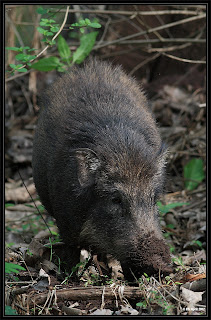The recent Comptroller-And-Auditor-General (CAG) report on coal block allocations to private sector companies has added fuel to the growing discontent of the populace against the incumbent UPA regime. Given the intentional obfuscation of the interpretation of the report, by mainstream media, the opposition and the government, there’s no clear scrutiny of the CAG report and how the CAG calculated the windfall gains of such private firms. This national frenzy, fuelled by the rampant corruption by our polity and the previous CAG “exposes”, has preferred to focus on the gargantuan sum of 1.86 Lakh Crores instead of the motives behind the allocation, and indeed the methodology behind the calculation. Here, I try to demystify the report, in laymen terms, and to bring out the bones of contention that should be up for scrutiny.
A Brief history of Coal in India
India has the highest repository of coal reserves in the world that amounts to nearly 15% of all reserves worldwide. Indira Gandhi, in her prescient wisdom, nationalized coal mining and production (Coal Mines (Nationalization) Act 1973) which exclusively reserved the mining of coal for the public sector viz. Coal India Limited (CIL) and Singareni Collieries Company Limited (SCCL). As a result of the inability of these companies to meet with the growing demand for coal, which was, and still is, the majority fuels supplier for power generation and steel production companies, the act was amended in 1976 to allow ‘captive’ mining by private companies engaged in production of iron and steel. This meant that these companies could mine their own coal to fuel their production. In 1993, this act was extended for captive consumption for power generation and cement companies. Thus, captive coal mining was, in phases, extended to private iron and steel production, power generation and cement production companies for their own end-use.
The production of coal assumed greater significance after the NDA government, under the tutelage of Mr. Vajpayee in 2004, announced the “Power for all by 2012” Scheme. Accordingly the government envisaged an additional capacity of 1,00,000 MW of power by 2012, which in turn prompted the planning commission to chart the plan for mining to support the power infrastructure sector.
Consequently, the Ministry of Coal (MoC) allocated some 194 coal blocks, which CIL had not scheduled for mining till 2012, for captive mining to Government and private parties, to meet the annual demands charted by planning commission.
The allocation process
In the process of allocation of captive mines, lies the crux of the “coalgate” scam where things become contentious. A Screening Committee was formed in 1992, intended for the screening of private power generation entities initially, and in 2003 extended for steel and cement entities, for captive mining. Up until 2004, there was no clearly spelt out criterion for eligibility, except that the companies had to produce letter of recommendations from their respective state governments.
In an instance provided in the CAG report of how the screening process was handled, the examples of Fatehpur and Rampia and dip side of Rampia were cited:
In a damning indictment of the lack of transparency, in the case of Rampia, 2 applicants were initially scheduled to make presentations, but the screening committee ended up recommending 6 companies!
The report then goes on to state that the Screening Committee then selected these companies based on the minutes of these meetings, but the minutes of meetings, themselves, provided no insights to the screening procedure of these applicants.
Further indictment follows. The government agreed to bring in transparency in the allocation process and do away with the screening committee in 2004, based on the recommendations by the expert committee, and introduce the auction of coal blocks through competitive bidding as a selection process. Despite such clear advice, the MoC continued with the hasty allocation of 38 coal blocks through the screening committee.
Was the 1.86L Crores a loss to the exchequer?
It is an intentional distortion of facts that has been propagated by sections of the media and the opposition that this figure is the loss to the exchequer. The report clearly states that this figure is the windfall gain that the private companies could have made. The actual loss to the exchequer could roughly be estimated by calculating the presumptive gains through the competitive bidding of the 38 mines and the encashment of the bank guarantees, paid by the private companies to ensure timely production, by those that could not honor their commitment. The CAG contended that the bank guarantees, now lapsed, of 15 blocks alone amounted to Rs. 311 Crores, and needed to be renewed.
The1.86L Crore math
The CAG prepared an elaborate and excessive filtering criterion for assuming the total extractable coal. It did not consider Underground mines, purported to have superior quality coal, joint venture blocks between PSUs and private companies and blocks allocated to Ultramodern Power Plants. It also only considered the Opencast (OC) reserves of mixed mines. In all, the CAG considered only 57 OC and Mixed Mines of the 75 coal blocks allotted to private companies for their calculation.
Based on some broad assumptions, they then came up with the following figures:
Total Extractable Reserves of OpenCast mines/ OpenCast reserves of mixed mines : 6282.5 MT
Average Selling Price / Ton (based on CIL figures for 2011/12) : Rs. 1028.42
Average Cost Price / Ton (based on CIL figures for 2011/12) : Rs. 583.01
Financing Cost / Ton (based on CIL figures) : Rs. 150
Net Gain / Ton : Rs. 295.41
Total financial benefit for private companies (in Crores): Rs. 1855913.3
The CAG math, itself fraught with childish naiveté, does not consider a host of tangibles and intangible, and goes by some egregiously simplified assumptions.
A few examples of CAGs lapses in calculations:
• The most glaring miscalculation is the assumption that the entire extractable reserve of the mines considered had already been mined. This hardly seems likely. Outrageously, Mr. Chidambaram, doing a Sibal, claimed that mining had not even begun in any of the stated mines, thereby dispelling the notion that there was any loss whatsoever. If only Politicians could be held accountable to what they said in press conferences and to the media!
• The CAG has assumed an average sale price of coal based on CIL’s figures of 2010-11. This seems unfair given the fluctuation in prices of coal over the years.
• The CAG has assumed an average cost price, again, based on CIL’s figures of 2010-11. Once again, this figure seems skewed given that private companies would have incurred a much higher initial cost price which would gradually have been brought down.
• The accuracy of percentage of extractable reserves from the mine plan is highly debatable. Also when no mining plan was available the CAG went with a rather ambiguous percentage (73% for OpenCast mines and 37% for Mixed mines) of geological reserves to arrive at an extractable reserve value, which could be called into question.
In defense of the CAG, arriving at a more exact figure would have been an extremely time consuming and complicated affair, and even then would have had to take into account a host of other assumptions. Given that the CAG has been extremely conservative in the number of mines they’ve selected in their audit and going by reports in the economic times regarding the conservative estimate in profit / ton, the windfall gains to private companies and indeed the loss to the exchequer could well be in excess of the 1.86L Crores that they’ve estimated. What is of no doubt, is that the CAGs motive was simply to highlight the gross negligence and dubiousness with which scarce natural resources were being doled out by politicians across the board, to private players and by highlighting the windfall gains certainly helped capture the attention of the media, the public and the opposition.
What can be done now?
No doubt, much like the 2G spectrum, an investigation will be launched into the screening process and cases will be filed against a few scapegoat politicians, bureaucrats and private players who illegally benefitted. If there was undue benefit to private players by the political class, it would be extremely difficult to prove. Unlike the 2G spectrum case, where the improper allocation was much more apparent, the ambiguity in the process of coal allocation by the screening committee, by way of no documented reasoning behind the allocation, will allow many ‘beneficiaries’ to go scot free. But then that is not new to us; our politicians manage to walk free, reveling in the sunlight, despite glaring evidence of wrongdoings shining off their gleaming white suits.
It would make sense and seem likely that that the allocated mines will be annulled and subjected to a competitive bidding process. If the implausible statement of Mr. Chidambaram is true, that mining has not started in any of the mines in question, this would certainly minimize losses to the exchequer.
Conclusion
The report does give us a valuable insight into how half-baked laws are pushed throughby the government, often, perhaps intentionally, enabling private companies to benefit from the loopholes in the law. It also showcases the lack of political will and inability of this government, in particular the Prime Minister, to build a consensus on no-brainer issues and then implement its own legislature.
What is also abundantly clear is that many political spokesmen, journalists and news presenters have intentionally gone around distorting facts by picking up portions of the report that suit them or their political affiliations. It is a travesty that many in the mainstream media have not bothered to read or understand the report in its entirety and allow political spokesmen to get away with their inane logic. Any 2-bit media person could have, if he or she wanted to, easily picked these arguments apart, but their inability or their incompetence has only fuelled the growing claims of their collusion with the decision makers.
The bottom line is that this government has to go, even at the risk of another coalition successor. Sadly as Yogendra Yadav rightly pointed out in a television debate, it is always the weakest governments that last the longest in our county.
Finally, I must point out that, in my book, if Anna Hazare was the face of India’s struggles against corruption last year, Vinod Rai’s role in bringing reforms in legislature and efficiency and transparency in government and PSU deliberations, will ensure that, in years to come, he goes down as the vigilante who fought and defeated the system from within.
***************
Timelines:
1973 – Indira Gandhi nationalizes coal production
1976 – Exceptions in policy made to allow (1) ‘captive’ mining by some Iron & Steel companies (2) sub lease for coal mining to private properties in isolated small pockets
1992 – Formation of screening committee screening proposals for captive mining by power generation companies
1993 – Exception in ‘captive’ policy extended to Power Generation Companies and other “end uses” like cement
1993 to 2005 – No clearly spelt out criteria for allocation of coal mines and allocation was almost solely on the production of a letter of recommendation from the concerned state government
2000 – Screening committee extended to include the representative of ministry of steel and cement
2003 – NDA Govt. under Vajpayee announces “Power for all by 2012”. As a result planning commission had to increase targets of coal production
2004 – Govt constitutes an Expert Committee on Coal Sector reforms. The most telling recommendations:
“The procedure and processes of allocation of coal blocks needed to be improved to expedite the allotment of captive coal blocks in a transparent and effective manner”
“Encashment of bank guarantees from non-serious players”
“Setting up a permanent special task force for monitoring progress of clearances and project implementation to enhance domestic coal capacity”
2006 – CIL relinquishes coal blocks that will not start mining till 2012. These blocks were to be allocated to private players to increase production of coal. This mined coal could be sold to CIL at govt. notified rates (note that before this only captive mines could use coal, not sell it). As a result 48 such blocks were de-reserved
2006 & 2008 – Guidelines for allocation of coal blocks prepared and modified
2010 – MMDR (Mines and Minerals (Development and Regulation)) Act is passed
































